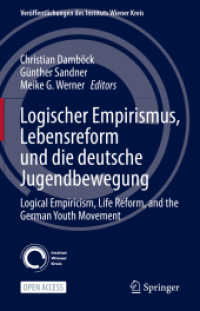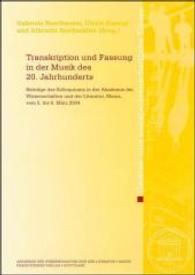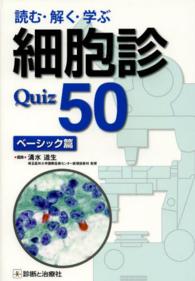- ホーム
- > 洋書
- > 英文書
- > Business / Economics
Full Description
This two-volume book examines the most important global problem—the recovery of the social-economic crises due to the COVID-19 pandemic. This economic crisis has its own basis and differs from others by the lockdown of most businesses on the decision of authorities. The uncertainty of the future economic revival obliges scientists around the world to unite in search of effective solutions that will become the basis for prosperity and human wellbeing.
The death of millions of people around the world, several waves of coronavirus, and a global pandemic have forced most states to seek extraordinary measures to save people and revive economic activity. The world economy experienced a global shock, probably never experienced before due to lockdowns. The disruptions and gaps in the value chains were primarily caused by the lockdowns of enterprises. The change in the essence of the economic crisis has raised the question of how to overcome it andrevive economic activity. The crisis caused a sharp decline in incomes of the population around the world, which led to social upheavals. Post-COVID economic revival in a globalized world has become the most important problem of our time. This book offers contributions of authors from different countries and explores problem solving in the fields of public administration (Volume I, Part I), financial services (Volume I, Part II), different branches (Volume II, Part III) and the social sector (Volume II, Part IV).
The second volume of the book is devoted problems in sectors of the economy, such as agriculture, tourism, aircraft, the automotive industry, electricity, culture, etc. The second part of the second volume examines trends in the revival in the social sector—medicine, pharmaceuticals, the labor market and social insurance. Despite the fact that the book is divided into two volumes and four parts, a holistic and systematic perception of the new reality of the post-COVID age can be obtained by reading the entire book.
This book will be of interest to academics and practitioners in public administration and economics, particularly those who are interested in Post-COVID economic revival.
Contents
Chapter 27: Post-COVID revival: economy and society.- Part III: Markets at Post-COVID Age.- Chapter 28: The National Technological Initiative of Russia Project Implementation as a Basis for the Development of Perspective Technological Markets and Industries in Russia.- Chapter 29: Opportunities and Prospects for Transition to Post-COVID Circular Economy.- Chapter 30: Disposal of Medical Waste in the COVID-19 and the post-COVID period.-Chapter 31: Pricing in the Context of Structural Modernization in Post-COVID Economy.- Chapter 32: The Impact of COVID-19 on Agriculture.- Chapter 33: Economic Mechanisms of Regulation of Innovative Industrial Technologies in the Post-COVID Age.- Chapter 34: Post-lockdown Flights: New Strategies for Civil Aircraft Manufacturers and Airlines.- Chapter 35: China's Electricity Market Reform in the Post-COVID Era.- Chapter 36: Creative Industries: a Review of the Effects of the COVID-19 Pandemic.- Chapter 37: Impact of the COVID-19 Pandemic on the Housing and Construction Markets.- Chapter 38: The Use of Artificial Intelligence in Automation of Planning and Operational Management of Organizational and Technical Systems in the COVID-19 Pandemic.- Chapter 39: The Changing Role of the Internal Audit of the Transport Facility in the Post-COVID Period.- Chapter 40: The Economic Impact of the COVID-19 Pandemic on the Russian Automotive Industry.- Chapter 41: Tourism at the Post-COVID Age.- Part IV: Social Development at Post-COVID Age.- Chapter 42: Influence of COVID-19 on Healthcare System.- Chapter 43: Government Protection of Both Parties in the Operation of the Post-Epidemic Labor Market in China.- Chapter 44: Flexible Employment Development in Post-COVID Economic Revival.- Chapter 45: The Impact and Response of Artificial Intelligence on Labor Market in Post-Epidemic Era.- Chapter 46: The Impact of the Coronavirus Pandemic on the Healthcare System in Poland.- Chapter 47: Back to the (Ab)normality: Eastern-European Labor Markets after Pandemic.- Chapter 48: Health Insurance Problems of Unknown Infections.- Chapter 49: The Impact of the COVID-19 Pandemic on the Labor Market in Poland.- Chapter 50: Analytical Review of the Market for COVID-19 Vaccines: Production, Cost, and Distribution.- Chapter 51: Judicial Institutions and Legal Services in the Post-COVID Period.








